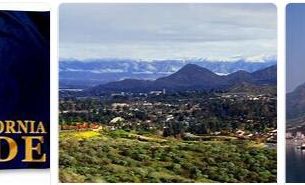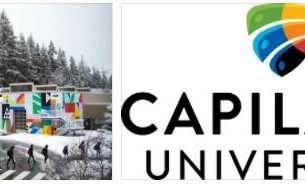On the Constitutional Walking Tour Those interested can explore Philadelphia on foot, where America began. The tour covers 30 attractions in the city.
Betsy Ross House, 239 Arch Street (between Second and Third Street)
Admission: $ 2 for adults, $ 1 per child (suggested donation). Betsy Ross and her husband John lived in this house, just two blocks from the US Mint, from 1773 to 1786. According to tradition, Betsy Ross sewed the first US flag here. Exhibitions tell of their life and the history of the “Old Glory”. Every year on June 14th the Flag Day Ceremonies take place at 12 noon.
Carpenters’ Hall, 320 Chestnut Street (between Third and Fourth Street)
The house of the carpenter’s guild, built in 1770, was the venue for the 1st Continental Congress in September 1774. In 1775, the 2nd Continental Congress moved its sessions to the larger Pennsylvania State House (now Independence Hall). The Carpenter`s Hall was still used by political groups and a history museum was set up in the mid-19th century. During the Revolutionary War it served as a hospital and arsenal for the American troops. The building still belongs to the carpenters’ guild.
Christ Church, 2nd Street above Market Street
The Christ Church, built from 1727 to 1754 according to plans by the architect Klarsley, is one of the oldest churches in the USA, built in the reign of George II. Many founding fathers attended services here (Benjamin Franklin, Francis Hopkinson, Robert Morris, George Washington). The church still serves the Protestant Episcopal Church today. The nearby cemetery is the resting place of the politician, writer and scientist Benjamin Franklin. Five signatories of the Declaration of Independence are also buried here.
Edgar Allen Poe National Historic Site, 532 North Seventh St. Poe lived in this house from 1838 to 1844 and wrote some of his famous works (“Murders in the Rue Morgue”, “The Pit and the Pendulum”., “The Tell-Tale Heart “,” The Cask of Amontillado “). The property consists of three buildings and a park area and is maintained by the National Park Service. The house can be visited as part of a tour, but it is not furnished, as nothing is known about the whereabouts of Poe’s original furniture. There are exhibitions on Poe’s life and a sound-slide presentation.
Elfreth’s Alley, on Second Street between Arch and Race Streets.
Admission is $ 2 for adults, $ 1 for children, $ 5 per family. The 1.80 m narrow alley with its restored houses, the oldest of which were built around 1690, is the oldest colonial- era residential street in the USA. Most of the 33 buildings are still privately owned today. Several buildings are only open to the public on the first weekend in June and December. For the rest of the year, only numbers 124 and 126 are open. The Elfreth’s Alley Museum offers guided tours, has a garden and of course a gift shop.
Independence Hall, Chestnut Street between 5th and 6th Streets
Free entry, only accessible by tours. The Independence Hall is the most important national traditional site in the USA and was built in 1732 as the seat of government for Pennsylvania. From 1775 to 1783 it served as the venue for the Continental Congress, and in 1776 the Declaration of Independence was passed in the Assembly Room. The US Constitution was adopted here by the Federal Constitution Convention in 1787. The building has been restored in recent years, the conference rooms inside have been restored down to the last detail according to the historical model. In front of Independence Hall is the statue of George Washington, created in 1869 by JA Bailly. Tickets to visit Independence Hall are available from the “Ticket Booth” directly opposite the building on Chestnut Street. Up to 6 tickets can be booked in advance via the National Park Service reservable. The television series “Treasures of the World – Heritage of Humanity” is about the Independence Hall in Philadelphia.
Liberty Bell, Market Street between 5th and 6th Street, the Liberty Bell was housed in a glass pavilion on the lawn across from Independence Hall. Since October 9, 2003, it has been presented in the New Liberty Bell Center. The Liberty Bell is a national relic, as it rang when the Declaration of Independence was first read out in 1776. In 1846, a thin crack worsened the sound of the bell. It was fixed and rang for George Washington’s birthday celebrations. However, thin cracks appeared again, so that the bell was no longer used. After someone approached her with a hammer, the safety regulations for visitors have been tightened.
National Constitution Center, 525 Arch Street, Independence Mall
Admission $ 6, children $ 5. The first museum in the US to be exclusively dedicated to the US Constitution. It is located in Independence National Historic Park, a few blocks from Independence Hall and the Liberty Bell. Only opened on July 4, 2003, the museum is state-of-the-art in presentation technology and is therefore interactive in many parts.
Penn’s Landing, Columbus Avenue between South and Vine Streets
Entrance subject to events. This is where William Penn, founder of the city of Philadelphia, set foot ashore for the first time. The river bank of the old port has been redesigned into a riverside park and a recreational area. Harbor tours start here and there are still maneuverable wooden sailing ships. The oldest sailing ship is the ” Gazela of Philadelphia “. The Independence Seaport Museum (Naval Museum) includes the USS “Olympia”, which played an important role in the war against Spain in 1898, and the submarine USS “Becuna” from WWII. The Great Plaza is the place of numerous cultural and ethnic events, concerts and festivals. There are plans to build a new entertainment center here, but construction has not yet started.
Society Hill, between Delaware River and 5th Street, bounded by Walnut Street on the north and Lombard Street on the south.
If you want to avoid the crowds at the historic sites of the Old City, you will find peace and quiet on this hilly area with residential areas from the city’s early days. The Philadelphia Redevelopment Authority acquired approximately 600 historic homes and rented them to individuals on condition that they be restored. Gaps in houses were filled with contemporary buildings. The main attraction for tourists is South Street with its shops and restaurants. The name Society Hill comes from the Free Society of Traders, which at the time gave William Penn discounts on land purchases and other privileges.
Philadelphia Museum of Art, 26th Street and Benjamin Franklin Parkway
admission $ 8, children under 18 $ 5, free Sunday until 1 p.m. Wednesday and Friday long evening opening hours until 8.45 p.m. The museum is one of the most important art museums in the USA. The museum building dates from 1928 according to plans by the architects Borie, Dantzinger and Trumbauer. From the steps, according to calculatorinc, there is an imposing panorama of the Philadelphia skyline. The European Impressionists and the American Collection are particularly worth seeing.
American Art: Decorative art, paintings and sculptures by American artists have been continuously collected since the museum was founded in 1876. The collection is considered one of the best today.
European arts and crafts: The museum rooms offer a tour through the history of art in Europe.
European painting and sculpture: Numerous names from the history of art are represented here with works: Agnolo Bronzini, Jean Baptiste Simenon Chardin, Jean Auguste Dominique Ingres, Nicolas Poussin, Paul Cézanne
The highlights of the permanent exhibitions are about on the internet Collections available in English.
Tip: A CityPass is available for Philadelphia, which includes admission to 6 attractions for a single price (= $ 36 for adults; $ 22 for children ages 3-11) (Philadelphia Zoo, Philadelphia Trolley Works, The Franklin Institute Science Museum, The Academy of Nataural Sciences, Independance Seaport Museum, National Constitution Center). More details under https://www.citypass.com/philadelphia.


